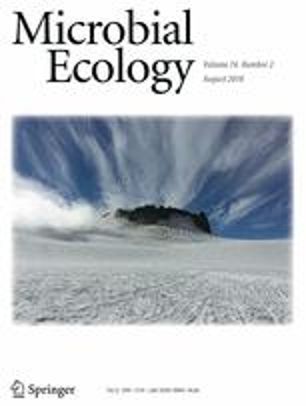Ver ítem
- xmlui.general.dspace_homeCentros e Institutos de InvestigaciónCICVyA. Centro de Investigación en Ciencias Veterinarias y AgronómicasInstituto de GenéticaArtículos científicosxmlui.ArtifactBrowser.ItemViewer.trail
- Inicio
- Centros e Institutos de Investigación
- CICVyA. Centro de Investigación en Ciencias Veterinarias y Agronómicas
- Instituto de Genética
- Artículos científicos
- Ver ítem
Absence of the nitrous oxide reductase gene cluster in commercial alfalfa inoculants is probably due to the extensive loss of genes during rhizobial domestication
Resumen
As other legume crops, alfalfa cultivation increases the emission of the greenhouse gas nitrous oxide (N2O). Since legumesymbiotic
nitrogen-fixing bacteria play a crucial role in this emission, it is important to understand the possible impacts of
rhizobial domestication on the evolution of denitrification genes. In comparison with the genomes of non-commercial strains,
those of commercial alfalfa inoculants exhibit low total genome size, low number of
[ver mas...]
As other legume crops, alfalfa cultivation increases the emission of the greenhouse gas nitrous oxide (N2O). Since legumesymbiotic
nitrogen-fixing bacteria play a crucial role in this emission, it is important to understand the possible impacts of
rhizobial domestication on the evolution of denitrification genes. In comparison with the genomes of non-commercial strains,
those of commercial alfalfa inoculants exhibit low total genome size, low number of ORFs and high numbers of both
frameshifted genes and pseudogenes, suggesting a dramatic loss of genes during bacterial domestication. Genomic analysis
focused on denitrification genes revealed that commercial strains have perfectly conserved the nitrate (NAP), nitrite (NIR) and
nitric (NOR) reductase clusters related to the production of N2O from nitrate but completely lost the nitrous oxide (NOS)
reductase cluster (nosRZDFYLX genes) associated with the reduction of N2O to gas nitrogen. Based on these results, we propose
future screenings for alfalfa-nodulating isolates containing both nitrogen fixation and N2O reductase genes for environmental
sustainability of alfalfa production.
[Cerrar]

Autor
Brambilla, Silvina Maricel;
Frare, Romina Alejandra;
Soto, Gabriela Cinthia;
Jozefkowicz, Cintia;
Ayub, Nicolás Daniel;
Fuente
Microbial Ecology 76 (2): 299–302 (August 2018)
Fecha
2018-08
Editorial
Springer
ISSN
0095-3628
1432-184X
1432-184X
Formato
pdf
Tipo de documento
artículo
Palabras Claves
Derechos de acceso
Restringido
 Excepto donde se diga explicitamente, este item se publica bajo la siguiente descripción: Creative Commons Attribution-NonCommercial-ShareAlike 2.5 Unported (CC BY-NC-SA 2.5)
Excepto donde se diga explicitamente, este item se publica bajo la siguiente descripción: Creative Commons Attribution-NonCommercial-ShareAlike 2.5 Unported (CC BY-NC-SA 2.5)

